You’re a Chief Revenue Officer, tasked with driving revenue growth. But how do you measure success? That’s where Key Performance Indicators (KPIs) come in.
They’re not just numbers; they’re crucial insights into your business strategy. By tracking the right KPIs, you’ll gain a clear vision of what’s working and what isn’t.
Let’s dive into the essential KPIs that’ll steer your company towards sustained profitability and growth.
Table of Contents
ToggleKey Takeaways
- KPIs are crucial for a Chief Revenue Officer as they provide evidence of strategy effectiveness and act as a navigational tool for business direction.
- Essential sales metrics such as sales revenue, sales growth, average deal size, and sales cycle length are powerful tools for strategic planning and revenue growth.
- Customer retention KPIs, including repeat purchase rates, churn rate, and up-sell/cross-sell success rates, are important for retaining existing customers and prompting changes in strategy for improved retention.
- Profitability ratios like gross profit margin, operating profit margin, and net profit margin shed light on financial health and performance, helping turn revenue into profit effectively.
Understanding the Role of a Chief Revenue Officer
Let’s delve into what a Chief Revenue Officer’s (CRO) role is and why it’s crucial for business growth.
As a CRO, you’re the driving force behind all revenue-generating strategies. You’re in charge of aligning all departments—sales, marketing, customer service—to ensure they work towards the same goal: maximizing profits.
You’ve got to be knowledgeable about market trends and possess exceptional forecasting skills; these will enable you to set realistic yet challenging revenue goals. Your keen analytical abilities are vital here. It’s your job to identify new opportunities for revenue growth and implement strategies that’ll leverage these opportunities effectively.
But it doesn’t just stop there; monitoring Key Performance Indicators (KPIs) plays a significant role in your position as well. These metrics give insight into how well your initiatives are performing. They show where adjustments may be needed, helping you make informed decisions about resources allocation or strategy tweaking.
In essence, as a CRO, not only do you design profit-maximizing strategies but also ensure their successful implementation by guiding team efforts and making data-driven decisions. Without this role held competently, businesses could falter in monetizing their offerings effectively or miss out on potential revenues altogether.
Key Performance Indicators: A Brief Overview
You’re probably wondering what exactly Key Performance Indicators (KPIs) are, and why they’re important to understand. Often shortened to KPIs, these are metrics used by companies to evaluate their success at reaching targets. They act as a navigational tool, helping you steer your business in the right direction.
Now, let’s delve into this concept more deeply. Not all measures of performance qualify as KPIs. A true KPI is actionable, which means it provides insights that you can use to make strategic decisions and take appropriate actions. It’s quantifiable too; it isn’t based on personal opinions or feelings but on hard data.
Understanding KPIs is crucial for a Chief Revenue Officer (CRO). As the person responsible for all revenue-generating processes in a company, you need hard evidence of how well your strategies are working out. These indicators give you that evidence. By tracking the right KPIs – such as customer acquisition cost, customer lifetime value, and churn rate – you can gain valuable insight into your business performance and identify areas where improvements can be made.
Essential Sales Metrics for Revenue Growth
You’re probably wondering, what exactly are essential sales metrics and how do they impact growth?
Well, these aren’t just arbitrary numbers or figures; they are quantifiable measures that can be used to assess the performance of your sales team.
Defining Essential Sales Metrics
It’s crucial to understand the essential sales metrics that can significantly impact a company’s revenue. These key performance indicators provide insight into your team’s efficiency and effectiveness, while also aiding in decision-making processes.
Firstly, monitor ‘Sales Revenue’. This basic metric provides a clear-cut view of total income generated from sales before expenses.
Next, keep an eye on the ‘Sales Growth’ over specific periods. It highlights trends and potential issues.
Then comes the ‘Average Deal Size’. By dividing total revenue by the number of deals closed, you’ll gain insights on deal quality.
Lastly, track the ‘Sales Cycle Length’. Shorter cycles often indicate efficient processes.
These metrics aren’t mere numbers; they’re powerful tools for strategic planning and growth. Understanding them is pivotal to driving your company’s growth trajectory.
Metrics Impact on Growth
Metrics aren’t just figures, they’re instrumental in steering your company’s growth. By monitoring the right key performance indicators (KPIs), you’re able to identify areas that need improvement and take appropriate action. It’s about finding the balance between focusing on long-term growth and meeting short-term sales targets.
Consider customer acquisition cost (CAC). If it’s high, you might be spending too much on marketing without seeing an adequate return on investment. Conversely, a low CAC could indicate you’re not investing enough to attract new customers.
Then there’s customer lifetime value (CLV). If this figure is declining, it might suggest your retention strategies aren’t working or that customers find little value in your product over time.
Therefore, analyzing metrics can guide strategic business decisions for sustainable growth.
The Importance of Customer Retention KPIs
Don’t underestimate the value of monitoring customer retention KPIs as they’re crucial to your company’s revenue growth. These metrics provide a clear picture of how well you’re keeping existing customers, which is often more cost-effective than acquiring new ones.
It’s important to focus on factors influencing customer loyalty. Tracking repeat purchase rates, for instance, can indicate whether clients are satisfied enough with your products or services to buy again. A high rate suggests successful strategies in place, while a low one may signal issues needing attention.
Another key indicator is the churn rate – the percentage of customers leaving over a specific period. A rising churn rate could mean dissatisfaction is mounting among your clients and prompt changes in strategy might be necessary.
Lastly, consider the up-sell and cross-sell success rates. They not only show if you’re effectively marketing additional offerings but also hint at overall satisfaction levels since happy customers are typically more receptive to upselling attempts.
How to Evaluate Profitability Ratios
Evaluating profitability ratios can offer a deeper understanding of your company’s financial health and performance. These key indicators shed light on how well you’re utilizing resources to generate profit. It’s not just about revenue; it’s also about the effectiveness in turning that revenue into profit.
Start by looking at your gross profit margin, which represents the percentage of total sales that has turned into profits. This ratio highlights your firm’s efficiency in managing its cost of goods sold (COGS). A higher ratio denotes better cost management.
Next, consider the operating profit margin, which tells you how much of each dollar of revenues remains after subtracting both COGS and all operating costs. It’s an important measure since it reflects the core earning power of your business.
Finally, assess your net profit margin. This indicates what proportion of revenue is left over after all expenses are deducted- including taxes and interest charges. A healthy net margin indicates a well-run company with good control over its costs.
Revenue Forecast Accuracy and Its Significance
Having dissected the importance of profitability ratios, let’s shift our focus to another critical KPI — revenue forecast accuracy. This metric provides a measure of how close your predicted revenues are to your actual revenues. It’s not just about predicting future income; it’s about the precision of those predictions.
You might wonder, why all this emphasis on accuracy? Well, it becomes crucial when you’re planning budgets or making investment decisions based on these forecasts. An overestimated forecast can lead to overspending and financial strain in other areas, while an underestimated one could cause missed opportunities.
But here’s where things get really interesting: Your degree of accuracy is also indicative of your understanding as a Chief Revenue Officer (CRO) about market dynamics and customer behavior. If your forecasts continually miss the mark, it indicates a disconnect between what you think is happening and what’s actually happening in the marketplace.
The Role of Conversion Rates in Revenue Generation
Shifting gears, let’s delve into the role of conversion rates in revenue generation. This factor is often overlooked, yet it plays a pivotal part in boosting your bottom line. You may have killer marketing strategies pulling in hordes of potential customers to your website or store, but if they aren’t converting into actual buyers, you’re leaving money on the table.
Conversion rates are essentially the ratio between visitors and buyers. It’s a clear indicator of how well you’re enticing prospects to take desired actions. Tracking this metric gives insight into areas where you can tweak your sales strategy for better results.
A low conversion rate might suggest that while your marketing efforts are successful in attracting people, there could be issues with product presentation or pricing turning them off. On the other hand, a high conversion rate indicates you’re doing something right – be it compelling product descriptions, competitive pricing, or excellent customer service.
Consider running A/B tests on different elements like landing pages or email campaigns to fine-tune what works best for your audience. Remember: even small increases in conversion rates can lead to significant boosts in revenue. Raising awareness about these metrics is crucial; don’t underestimate their power!
Best Practices for Monitoring and Improving KPIs
In your quest to maximize revenue, it’s crucial that you’re not just tracking Key Performance Indicators (KPIs), but also implementing effective strategies for constant monitoring and improvement.
It’s all about understanding what works, what doesn’t, and why.
Let’s delve into the specifics of effective KPI monitoring strategies as well as techniques to foster continuous improvement in your KPI performance.
Effective KPI Monitoring Strategies
You’ll find that effective KPI monitoring strategies can significantly improve your revenue generation efforts. It’s not just about tracking numbers; it’s interpreting what they say and acting on them promptly.
Regularly reviewing your KPIs helps you quickly spot trends and variances in performance, allowing you to make necessary adjustments before minor issues become major problems.
Consider incorporating real-time data analysis into your strategy. This gives you a current snapshot of your performance against set goals, enabling swift corrective action when needed.
Also crucial is selecting relevant KPIs aligned with your business objectives; otherwise, you’re wasting resources tracking irrelevant metrics.
Lastly, remember to communicate these insights across the team. When everyone understands their impact on overall performance, they’re more motivated to contribute positively.
KPI Improvement Techniques
To boost your performance, it’s essential to master some KPI improvement techniques.
First off, you must set clear and measurable objectives. This ensures you’re not just tracking data but defining what success looks like for your team.
Next, consider benchmarking against industry standards. It helps to know where you stand compared to others in the same field. You’ll gain valuable insights about areas that need more focus or new strategies.
It’s also crucial to engage your team in the process. They are on the ground doing the work and can provide firsthand insight into potential improvements.
Lastly, don’t get complacent with current metrics; keep reviewing them over time for any necessary adjustments or adaptations. Remember, improving KPIs isn’t a one-time effort; it requires constant attention and dedication.



